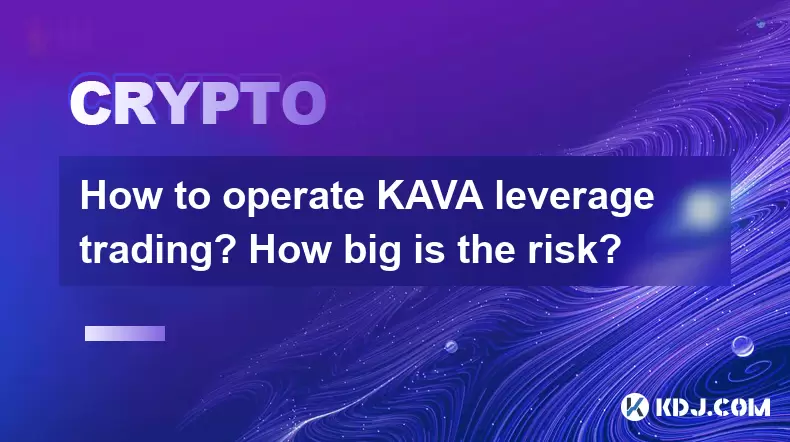-
 Bitcoin
Bitcoin $107,443.3008
-1.17% -
 Ethereum
Ethereum $2,494.2503
-0.63% -
 Tether USDt
Tether USDt $1.0003
0.00% -
 XRP
XRP $2.2496
2.23% -
 BNB
BNB $658.7569
0.63% -
 Solana
Solana $154.9826
1.94% -
 USDC
USDC $1.0000
0.01% -
 TRON
TRON $0.2799
1.07% -
 Dogecoin
Dogecoin $0.1659
-1.78% -
 Cardano
Cardano $0.5745
0.25% -
 Hyperliquid
Hyperliquid $39.7005
0.13% -
 Bitcoin Cash
Bitcoin Cash $519.5989
3.78% -
 Sui
Sui $2.7874
-2.40% -
 Chainlink
Chainlink $13.3762
-1.69% -
 UNUS SED LEO
UNUS SED LEO $9.0784
-0.64% -
 Avalanche
Avalanche $17.9846
-2.81% -
 Stellar
Stellar $0.2390
-0.06% -
 Toncoin
Toncoin $2.9028
0.25% -
 Shiba Inu
Shiba Inu $0.0...01147
-2.17% -
 Litecoin
Litecoin $86.6956
-1.27% -
 Hedera
Hedera $0.1508
-0.50% -
 Monero
Monero $322.6222
3.26% -
 Polkadot
Polkadot $3.4124
-2.99% -
 Dai
Dai $0.9999
0.00% -
 Bitget Token
Bitget Token $4.5434
-1.97% -
 Ethena USDe
Ethena USDe $1.0002
0.00% -
 Uniswap
Uniswap $7.1562
-2.61% -
 Aave
Aave $275.8830
-1.02% -
 Pepe
Pepe $0.0...09790
-4.04% -
 Pi
Pi $0.5018
-5.09%
How to operate KAVA leverage trading? How big is the risk?
KAVA enables leverage trading on Cosmos, allowing users to borrow against collateral to amplify trading positions, with risks like liquidation and market volatility.
May 08, 2025 at 07:36 am

Introduction to KAVA Leverage Trading
KAVA is a decentralized finance (DeFi) platform that operates on the Cosmos network, offering various financial services including lending, borrowing, and leverage trading. Leverage trading on KAVA allows users to borrow assets against their collateral to increase their trading position, potentially magnifying both profits and losses. Understanding how to operate leverage trading on KAVA and the associated risks is crucial for anyone looking to engage in this activity.
Setting Up for KAVA Leverage Trading
To start leverage trading on KAVA, you need to follow a series of steps to set up your account and prepare for trading. Here's how you can do it:
- Install a Compatible Wallet: You'll need a wallet that supports the Cosmos ecosystem, such as Keplr or Cosmostation. Download and install the wallet of your choice.
- Connect to KAVA: Open your wallet and connect it to the KAVA platform. You can do this by visiting the KAVA website and clicking on the "Connect Wallet" button.
- Deposit Collateral: To engage in leverage trading, you'll need to deposit collateral. Navigate to the "Deposit" section on the KAVA platform and select the asset you want to deposit. Follow the on-screen instructions to transfer your assets from your wallet to KAVA.
- Borrow Assets: Once your collateral is deposited, you can borrow assets against it. Go to the "Borrow" section, choose the asset you want to borrow, and specify the amount. Confirm the transaction through your wallet.
Executing Leverage Trades on KAVA
After setting up your account and borrowing assets, you can proceed to execute leverage trades. Here's how:
- Select a Trading Pair: Navigate to the trading section on the KAVA platform and choose the trading pair you want to trade. For example, if you want to trade Bitcoin against USD, you would select the BTC/USD pair.
- Enter Trade Details: Specify the amount of the borrowed asset you want to use for trading, and set your desired leverage level. Higher leverage increases both potential gains and losses.
- Place the Order: Choose between a market order for immediate execution or a limit order to set a specific price. Confirm the order through your wallet.
- Monitor and Manage Your Position: Keep an eye on your trade's performance. You can use stop-loss and take-profit orders to manage your risk automatically.
Understanding the Risks of KAVA Leverage Trading
Leverage trading on KAVA, like any form of leveraged trading, comes with significant risks. It's essential to understand these risks before engaging in such activities:
- Liquidation Risk: If the value of your collateral falls below a certain threshold, known as the liquidation level, your position may be liquidated to cover the borrowed amount. This can result in a total loss of your collateral.
- Market Volatility: The cryptocurrency market is highly volatile, which can lead to rapid and significant price movements. These movements can amplify losses when trading with leverage.
- Interest Rates: Borrowing assets on KAVA incurs interest, which can accumulate over time. High interest rates can eat into your profits or increase your losses.
- Operational Risks: Technical issues, such as platform downtime or wallet connectivity problems, can affect your ability to manage your trades effectively.
Managing Risks in KAVA Leverage Trading
To mitigate the risks associated with leverage trading on KAVA, consider the following strategies:
- Set Stop-Loss Orders: Use stop-loss orders to automatically close your position if the market moves against you beyond a certain point. This can help limit your losses.
- Diversify Your Collateral: Instead of using a single asset as collateral, consider diversifying across multiple assets to spread the risk.
- Monitor Your Positions Closely: Regularly check the performance of your trades and be prepared to adjust your strategy based on market conditions.
- Start with Low Leverage: If you're new to leverage trading, start with lower leverage levels to gain experience and understand the market dynamics better.
Practical Example of KAVA Leverage Trading
Let's walk through a practical example to illustrate how leverage trading works on KAVA:
- Scenario: You want to trade Bitcoin (BTC) against USD with a leverage of 5x. You deposit 1 BTC as collateral, which is worth $50,000 at the current market price.
- Borrowing: You borrow $25,000 in USD against your 1 BTC collateral, giving you a total trading position of $75,000 ($50,000 from your collateral + $25,000 borrowed).
- Trading: You use the $75,000 to buy more BTC, effectively increasing your exposure to the market.
- Outcome: If the price of BTC increases by 10%, your position would be worth $82,500, and after repaying the $25,000 loan, you would have a profit of $7,500. However, if the price of BTC decreases by 10%, your position would be worth $67,500, and after repaying the loan, you would have a loss of $17,500.
Frequently Asked Questions
Q: Can I use any cryptocurrency as collateral on KAVA for leverage trading?
A: KAVA supports a variety of cryptocurrencies as collateral, including but not limited to BTC, ETH, and KAVA's native token. However, the availability of specific assets may vary, so it's important to check the platform's current offerings.
Q: What happens if I can't repay my borrowed assets on KAVA?
A: If you are unable to repay your borrowed assets, and the value of your collateral falls below the liquidation level, your position will be liquidated. This means your collateral will be sold to cover the borrowed amount, potentially resulting in a total loss of your initial investment.
Q: How quickly can I withdraw my collateral from KAVA?
A: The speed of withdrawing collateral from KAVA depends on the network's congestion and the specific asset you are withdrawing. Generally, withdrawals can take anywhere from a few minutes to several hours. Always ensure you have sufficient time to manage your positions before attempting to withdraw.
Q: Are there any fees associated with leverage trading on KAVA?
A: Yes, there are several fees associated with leverage trading on KAVA. These include borrowing fees, trading fees, and potential network fees for transactions. It's important to review the fee structure on the KAVA platform before engaging in leverage trading.
Disclaimer:info@kdj.com
The information provided is not trading advice. kdj.com does not assume any responsibility for any investments made based on the information provided in this article. Cryptocurrencies are highly volatile and it is highly recommended that you invest with caution after thorough research!
If you believe that the content used on this website infringes your copyright, please contact us immediately (info@kdj.com) and we will delete it promptly.
- Bitcoin, Bitfinex, and Acceleration: Decoding the Crypto Crossroads
- 2025-07-01 12:50:11
- SOL, XRP, LTC ETFs: Are We on the Cusp of Crypto History?
- 2025-07-01 12:50:11
- BNB Chain's Maxwell Upgrade: Sub-Second Blocks and a Whole Lotta Speed!
- 2025-07-01 13:10:12
- Bitcoin, Ethereum, Crypto Decline? Nah, Just a New York Minute!
- 2025-07-01 13:10:12
- Coinpass: The Gold-Standard Crypto Platform for UK Businesses
- 2025-07-01 12:30:12
- Tokenized ETFs, Robinhood, and Europe: A New Era of Finance?
- 2025-07-01 12:30:12
Related knowledge

How to customize USDT TRC20 mining fees? Flexible adjustment tutorial
Jun 13,2025 at 01:42am
Understanding USDT TRC20 Mining FeesMining fees on the TRON (TRC20) network are essential for processing transactions. Unlike Bitcoin or Ethereum, where miners directly validate transactions, TRON uses a delegated proof-of-stake (DPoS) mechanism. However, users still need to pay bandwidth and energy fees, which are collectively referred to as 'mining fe...

USDT TRC20 transaction is stuck? Solution summary
Jun 14,2025 at 11:15pm
Understanding USDT TRC20 TransactionsWhen users mention that a USDT TRC20 transaction is stuck, they typically refer to a situation where the transfer of Tether (USDT) on the TRON blockchain has not been confirmed for an extended period. This issue may arise due to various reasons such as network congestion, insufficient transaction fees, or wallet-rela...

How to cancel USDT TRC20 unconfirmed transactions? Operation guide
Jun 13,2025 at 11:01pm
Understanding USDT TRC20 Unconfirmed TransactionsWhen dealing with USDT TRC20 transactions, it’s crucial to understand what an unconfirmed transaction means. An unconfirmed transaction is one that has been broadcasted to the blockchain network but hasn’t yet been included in a block. This typically occurs due to low transaction fees or network congestio...

How to check USDT TRC20 balance? Introduction to multiple query methods
Jun 21,2025 at 02:42am
Understanding USDT TRC20 and Its ImportanceUSDT (Tether) is one of the most widely used stablecoins in the cryptocurrency market. It exists on multiple blockchain networks, including TRC20, which operates on the Tron (TRX) network. Checking your USDT TRC20 balance accurately is crucial for users who hold or transact with this asset. Whether you're sendi...

What to do if USDT TRC20 transfers are congested? Speed up trading skills
Jun 13,2025 at 09:56am
Understanding USDT TRC20 Transfer CongestionWhen transferring USDT TRC20, users may occasionally experience delays or congestion. This typically occurs due to network overload on the TRON blockchain, which hosts the TRC20 version of Tether. Unlike the ERC20 variant (which runs on Ethereum), TRC20 transactions are generally faster and cheaper, but during...

The relationship between USDT TRC20 and TRON chain: technical background analysis
Jun 12,2025 at 01:28pm
What is USDT TRC20?USDT TRC20 refers to the Tether (USDT) token issued on the TRON blockchain using the TRC-20 standard. Unlike the more commonly known ERC-20 version of USDT (which runs on Ethereum), the TRC-20 variant leverages the TRON network's infrastructure for faster and cheaper transactions. The emergence of this version came as part of Tether’s...

How to customize USDT TRC20 mining fees? Flexible adjustment tutorial
Jun 13,2025 at 01:42am
Understanding USDT TRC20 Mining FeesMining fees on the TRON (TRC20) network are essential for processing transactions. Unlike Bitcoin or Ethereum, where miners directly validate transactions, TRON uses a delegated proof-of-stake (DPoS) mechanism. However, users still need to pay bandwidth and energy fees, which are collectively referred to as 'mining fe...

USDT TRC20 transaction is stuck? Solution summary
Jun 14,2025 at 11:15pm
Understanding USDT TRC20 TransactionsWhen users mention that a USDT TRC20 transaction is stuck, they typically refer to a situation where the transfer of Tether (USDT) on the TRON blockchain has not been confirmed for an extended period. This issue may arise due to various reasons such as network congestion, insufficient transaction fees, or wallet-rela...

How to cancel USDT TRC20 unconfirmed transactions? Operation guide
Jun 13,2025 at 11:01pm
Understanding USDT TRC20 Unconfirmed TransactionsWhen dealing with USDT TRC20 transactions, it’s crucial to understand what an unconfirmed transaction means. An unconfirmed transaction is one that has been broadcasted to the blockchain network but hasn’t yet been included in a block. This typically occurs due to low transaction fees or network congestio...

How to check USDT TRC20 balance? Introduction to multiple query methods
Jun 21,2025 at 02:42am
Understanding USDT TRC20 and Its ImportanceUSDT (Tether) is one of the most widely used stablecoins in the cryptocurrency market. It exists on multiple blockchain networks, including TRC20, which operates on the Tron (TRX) network. Checking your USDT TRC20 balance accurately is crucial for users who hold or transact with this asset. Whether you're sendi...

What to do if USDT TRC20 transfers are congested? Speed up trading skills
Jun 13,2025 at 09:56am
Understanding USDT TRC20 Transfer CongestionWhen transferring USDT TRC20, users may occasionally experience delays or congestion. This typically occurs due to network overload on the TRON blockchain, which hosts the TRC20 version of Tether. Unlike the ERC20 variant (which runs on Ethereum), TRC20 transactions are generally faster and cheaper, but during...

The relationship between USDT TRC20 and TRON chain: technical background analysis
Jun 12,2025 at 01:28pm
What is USDT TRC20?USDT TRC20 refers to the Tether (USDT) token issued on the TRON blockchain using the TRC-20 standard. Unlike the more commonly known ERC-20 version of USDT (which runs on Ethereum), the TRC-20 variant leverages the TRON network's infrastructure for faster and cheaper transactions. The emergence of this version came as part of Tether’s...
See all articles

























































































